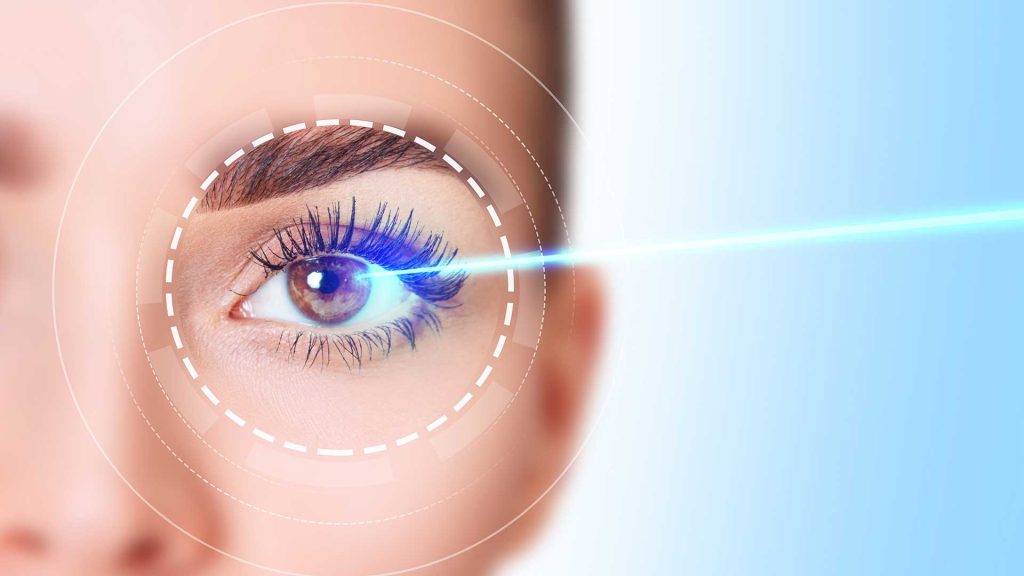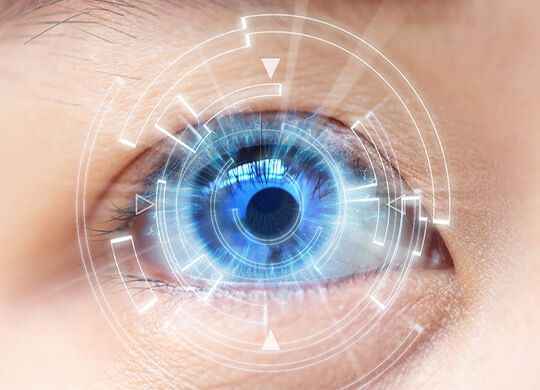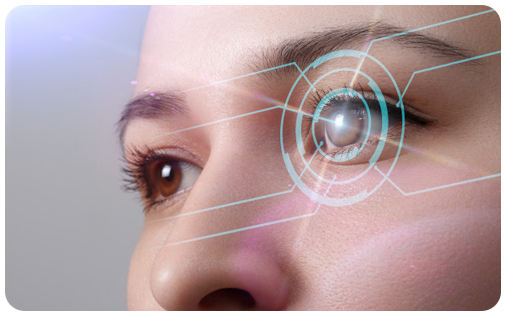iLasik Laser Treatment, i-Lasik Laser Treatment Prices in Turkey Technology and science are advancing at full speed in order to make people’s lives easier by merging. This progress is a beacon of hope for many people, especially in the field of health.
- What is iLasik Laser?
- Who is iLasik Laser Applied to?
- How is iLasik Surgery Performed?
- How Long Does i-Lasik Laser Surgery Take?
- Post iLasik Laser Treatment Process
- How Many Days Does i-Lasik Laser Heal?
- Is It Possible to Change Lenses After iLasik?
- How Long Can the iLasik Laser Be Used?
- Is iLasik Good for Eyes?
- How Should Eye Care Be After i-Lasik Treatment?
- What Can Be Cured by iLasik?
- What Are the i-Lasik Treatment Methods?
- What are the Advantages of i-Lasik Eye Laser?
- What are the Disadvantages of i-Lasik Eye Laser?
- How Long is the i-Lasik Laser Healing Process?
- What are the Differences Between i-Lasik and LASIK?
- iLasik laser in Turkey and in Istanbul
- i-Lasik Laser Treatment Prices in Turkey
Many diseases are now treatable. These treatments have made extensive progress, especially in the eye. People who have had to wear glasses or lenses throughout their lives can now start to see normally with iLasik laser treatment.
In this article that we have researched for you, we will talk about laser treatment, which has been preferred by many people recently. Together we will find answers to many questions such as what is laser treatment, to whom it is performed, and how it is done.
What is iLasik Laser?
Many people in the world have refractive errors. These are examined under three headings as hyperopia, astigmatism, and myopia. Ilasik laser treatment is a treatment method that will provide permanent vision by treating patients who use glasses and lenses because of these defects.
It has been revealed as a result of research that large occupational groups such as those working in the army and those working in NASA, prefer this treatment method and provide permanent improvements.
Who is iLasik Laser Applied to?

Ilasik laser treatment method is applied to many people. But in order for this application to be made for you, you need to have a number of criteria. We can list these criteria for you as follows:
- Persons over the age of 18
- People with myopia degree of 10, hyperopia degree of 6, and astigmatism degree of 4
- People with a sufficient thickness of the corneal layer in the eye
- People who do not have various systemic diseases such as diabetes or rheumatism
- As a result of the examinations made by the doctor, laser treatment can be applied to people with suitable eye structure
How is iLasik Surgery Performed?
This surgery is performed by providing numbness in the eye with anesthetic drops applied to the eye. First of all, a 3-dimensional eye map of the eye is created with the latest technology Wavefront. This information is sent to the laser called an excimer and is created individually.
After the numbing process takes place, the surgical process begins with a bladeless laser. The cornea is reshaped in the light of the information sent to the device. Thus, the disease in the eye is treated. Although the procedures vary from person to person, it takes about 5-10 minutes for one eye.
How Long Does i-Lasik Laser Surgery Take?

Ilasik laser eye surgery is performed by numbing the eye with anesthetic drops. After this procedure, there is a treatment process that takes an average of 5-10 minutes for one eye and an average of 15-20 minutes for both eyes.
Post iLasik Laser Treatment Process
- Although it is a short laser procedure, it should not be forgotten that this is an operation and the doctor’s instructions should be strictly followed:
- During the first day after the operation, the eyes should not be touched or rubbed with water.
- After the surgery, the eye medications prescribed by the doctor should be used without interruption.
- After resting at home for 1 day, routine life can be resumed the next day.
- Eye checks are a very important detail. Controls should be done without interruption.
How Many Days Does i-Lasik Laser Heal?
After the surgery, there will be no problem in the person’s vision, but it is predicted that clear vision and clear recovery will take about 2-3 months.
During this process, the doctor and the patient should be in contact and the treatment process should proceed without interruption.
Is It Possible to Change Lenses After iLasik?
LASIK, or Laser-Assisted In Situ Keratomileusis, is a popular refractive surgery that corrects vision problems such as nearsightedness, farsightedness, and astigmatism. It reshapes the cornea to improve vision without the need for glasses or contact lenses. However, some individuals who have undergone LASIK may wonder if they can still get lens replacement surgery in the future.
Lens replacement surgery, also known as refractive lens exchange or clear lens extraction, involves removing the natural lens of the eye and replacing it with an artificial intraocular lens (IOL). This procedure is typically performed to correct presbyopia, a condition that affects near vision as people age.
The good news is that lens replacement surgery can be done after LASIK. Since LASIK primarily reshapes the cornea and not the lens, the natural lens remains intact. Therefore, it can still be replaced with an artificial lens if needed.
However, it is important to note that the decision to undergo lens replacement surgery after LASIK should be made after careful consideration and consultation with an experienced eye surgeon. Factors such as the overall health of the eye, the stability of the LASIK correction, and the individual’s visual needs will be taken into account.
In conclusion, if you have previously undergone LASIK and now require lens replacement surgery, it is possible to proceed with the procedure. Consultation with a qualified eye surgeon is crucial to determine the best course of action for your specific situation.
How Long Can the iLasik Laser Be Used?

The iLasik Laser has revolutionized the field of vision correction, offering a safe and effective solution for those seeking freedom from glasses and contact lenses. But how long can this remarkable technology be used?
The iLasik Laser is designed to last for many years, providing consistent and reliable results. The lifespan of the laser depends on various factors, including its maintenance, usage, and technological advancements. With proper care and regular servicing, the iLasik Laser can be used for a significant period.
Maintenance plays a crucial role in ensuring the longevity of the iLasik Laser. Regular cleaning and calibration by trained technicians help to maintain its accuracy and precision. Additionally, adherence to manufacturer guidelines and protocols is essential to maximize its lifespan.
Usage also affects the longevity of the iLasik Laser. The laser is typically used for thousands of procedures before it may require replacement or major upgrades. However, advancements in technology and the introduction of newer models may render older lasers obsolete over time.
Technological advancements in the field of laser vision correction are constantly evolving. While the iLasik Laser is currently a state-of-the-art technology, future innovations may lead to the development of more advanced lasers with enhanced capabilities. However, it is important to note that even if newer lasers become available, the iLasik Laser will still be effective and safe for the foreseeable future.
In conclusion, with proper maintenance, the iLasik Laser can be used for a considerable period, providing exceptional vision correction results. While the lifespan of the laser may be influenced by factors such as maintenance, usage, and technological advancements, it remains a reliable and long-lasting solution for those seeking visual freedom.
Is iLasik Good for Eyes?
LASIK surgery has been proven to significantly improve vision for many individuals. The procedure itself is relatively safe and painless, with a quick recovery time. Most patients experience improved vision within 24 hours, and many achieve 20/20 vision or better. This means that they no longer need to rely on glasses or contact lenses to see clearly.
However, it is important to note that LASIK surgery may not be suitable for everyone. Certain factors, such as age, eye health, and the severity of vision problems, can affect the success of the procedure. It is crucial to consult with a qualified ophthalmologist to determine if LASIK surgery is the right option for you.
While LASIK surgery is generally safe, like any surgical procedure, it does carry some risks. These risks include dry eyes, glare, halos, and even a loss of vision in rare cases. It is essential to thoroughly discuss these risks with your doctor and weigh them against the potential benefits before making a decision.
In conclusion, LASIK surgery can be an excellent option for those seeking to improve their vision. It has helped millions of people achieve clearer vision and reduce their dependence on corrective eyewear. However, it is crucial to consult with a qualified professional to determine if LASIK surgery is suitable for your specific eye condition.
How Should Eye Care Be After i-Lasik Treatment?

After i-Lasik treatment, it is important to follow your doctor’s instructions carefully to ensure a smooth and uneventful recovery. Here are some tips for eye care after i-Lasik treatment:
Use prescribed eye drops: Your doctor will prescribe eye drops to help with the discomfort and to protect your eyes. Use these drops as directed to help your eyes heal.
Avoid rubbing your eyes: Rubbing your eyes can irritate them and slow down the healing process.
Wear sunglasses or a hat: Protect your eyes from the sun and wind.
Be patient: The i-Lasik healing process takes time. Be patient and give your eyes time to heal.
Here are some additional tips for eye care after i-Lasik treatment:
Get plenty of rest: Your eyes will need time to heal, so it is important to get plenty of rest.
Avoid strenuous activity: Strenuous activity can increase your risk of eye infection. Avoid strenuous activity for at least 24 hours after your i-Lasik treatment.
Do not swim: Swimming can introduce bacteria into your eyes. Avoid swimming for at least 1 week after your i-Lasik treatment.
Do not wear contact lenses: Contact lenses can irritate your eyes and slow down the healing process. Avoid wearing contact lenses for at least 1 week after your i-Lasik treatment.
What Can Be Cured by iLasik?
One of the most common conditions that iLASIK can treat is nearsightedness or myopia. This occurs when the cornea is too curved or the eye is too long, causing distant objects to appear blurry. By reshaping the cornea using a precise laser, iLASIK corrects the refractive error, enabling patients to see clearly without the need for glasses or contact lenses.
iLASIK is also highly effective in treating farsightedness or hyperopia, where close-up objects appear blurry. By adjusting the shape of the cornea, iLASIK enhances the eye’s ability to focus on nearby objects, providing patients with improved near vision.
Additionally, iLASIK can correct astigmatism, a condition caused by an irregularly shaped cornea. This leads to distorted or blurred vision at all distances. iLASIK reshapes the cornea, creating a more symmetrical surface, and thus correcting the astigmatism.
It’s important to note that iLASIK is not suitable for everyone. Factors such as age, overall eye health, and the severity of the vision problem are taken into consideration during the consultation process. However, for those who are eligible, iLASIK offers a life-changing solution to various vision impairments.
In conclusion, iLASIK is a remarkable procedure that can cure nearsightedness, farsightedness, and astigmatism. By reshaping the cornea, this advanced surgery provides patients with clear and sharp vision, freeing them from the constraints of glasses and contact lenses. If you’re considering iLASIK, consult with a qualified eye surgeon to determine if this procedure is right for you.
What Are the i-Lasik Treatment Methods?

i-Lasik is a type of laser eye surgery that uses a femtosecond laser to create a flap in the cornea, and an excimer laser to reshape the cornea. It is a popular choice for laser eye surgery because it is generally more precise and accurate than other methods, and it can be used to correct a wider range of vision problems.
The i-Lasik treatment method has two main steps:
–Flap creation: The femtosecond laser creates a thin flap in the cornea. This flap is then lifted, and the excimer laser is used to reshape the cornea.
–Flap replacement: The flap is then replaced, and the eye is allowed to heal.
The i-Lasik treatment method is typically performed on an outpatient basis, and it takes about 15 minutes per eye. Most people experience some discomfort and blurred vision immediately after the procedure, but this usually resolves within a few days.
The i-Lasik treatment method is generally safe and effective, but it is important to talk to your doctor about the risks and benefits before undergoing the procedure.
What are the Advantages of i-Lasik Eye Laser?
i-Lasik is a type of laser eye surgery that uses a femtosecond laser to create a flap in the cornea, and an excimer laser to reshape the cornea. It is a popular choice for laser eye surgery because it is generally more precise and accurate than other methods, and it can be used to correct a wider range of vision problems.
Here are some of the advantages of i-Lasik:
Precision and accuracy: i-Lasik is a very precise and accurate procedure. The femtosecond laser creates a very thin and precise flap in the cornea, which allows the excimer laser to reshape the cornea with great accuracy. This results in a better visual outcome than other laser eye surgery methods.
Wide range of vision problems: i-Lasik can be used to correct a wide range of vision problems, including nearsightedness, farsightedness, and astigmatism. It can also be used to correct presbyopia, which is the age-related loss of near vision.
Fast recovery: i-Lasik typically has a faster recovery time than other laser eye surgery methods. Most people are able to see well enough to drive and return to work within a few days of the procedure.
Less pain and discomfort: i-Lasik is generally associated with less pain and discomfort than other laser eye surgery methods. This is because the femtosecond laser creates a very thin flap in the cornea, which causes less trauma to the eye.
Safe and effective: i-Lasik is a safe and effective procedure. It has been performed on millions of people worldwide, and it has a high success rate.
What are the Disadvantages of i-Lasik Eye Laser?
i-Lasik is a type of laser eye surgery that uses a femtosecond laser to create a flap in the cornea, and an excimer laser to reshape the cornea. It is a popular choice for laser eye surgery because it is generally more precise and accurate than other methods, and it can be used to correct a wider range of vision problems.
However, like any medical procedure, i-Lasik also has some disadvantages. Here are some of them:
Cost: i-Lasik is a more expensive procedure than other laser eye surgery methods.
Discomfort: Most people experience some discomfort and blurred vision immediately after the procedure. This usually resolves within a few days.
Risk of complications: There is a small risk of complications with i-Lasik, such as dry eyes, infection, and corneal scarring.
Not for everyone: i-Lasik is not suitable for everyone. People with certain eye conditions, such as thin corneas or glaucoma, may not be good candidates for the procedure.
How Long is the i-Lasik Laser Healing Process?
i-Lasik is a type of laser eye surgery that uses a femtosecond laser to create a flap in the cornea, and an excimer laser to reshape the cornea. It is a popular choice for laser eye surgery because it is generally more precise and accurate than other methods, and it can be used to correct a wider range of vision problems.
The i-Lasik laser healing process typically takes about 1-2 weeks. During this time, your eyes will be healing and adjusting to the new shape of your cornea. You may experience some discomfort and blurred vision, but this usually resolves within a few days.
Here are some of the things you can expect during the i-Lasik laser healing process:
Immediately after the procedure: Your eyes will be blurry and you may experience some discomfort. You will be given eye drops to help with the discomfort and to protect your eyes.
First few days: Your vision will continue to be blurry and you may experience some light sensitivity. You will need to wear sunglasses or a hat to protect your eyes from the sun.
1-2 weeks: Your vision will start to improve and you will be able to see clearly. However, you may still experience some dryness and irritation.
It is important to follow your doctor’s instructions carefully during the i-Lasik laser healing process. This will help to ensure a smooth and uneventful recovery.
What are the Differences Between i-Lasik and LASIK?
i-Lasik and LASIK are both types of laser eye surgery that use a laser to reshape the cornea, the clear front part of the eye. However, there are some key differences between the two procedures.
i-Lasik uses a femtosecond laser to create a flap in the cornea, while LASIK uses a blade called a microkeratome to create the flap. The femtosecond laser is more precise and accurate than the microkeratome, which can lead to better vision outcomes.
i-Lasik is also generally associated with less pain and discomfort than LASIK. This is because the femtosecond laser creates a thinner flap, which causes less trauma to the eye.
LASIK is a more established procedure than i-Lasik, and there is more data on its long-term safety and effectiveness. However, i-Lasik is becoming increasingly popular because of its advantages in terms of precision, accuracy, and pain.
| Feature | i-Lasik | LASIK |
| Laser used to create flap | Femtosecond laser | Microkeratome |
| Precision and accuracy | More precise and accurate | Less precise and accurate |
| Pain and discomfort | Less pain and discomfort | More pain and discomfort |
| Long-term safety and effectiveness | Less data available | More data available |
| Popularity | Becoming increasingly popular | More established procedure |
iLasik laser in Turkey and in Istanbul
Turkey, a country known for its rich history and vibrant culture, has emerged as a popular destination for medical tourism. Among the various medical procedures offered, iLasik laser eye surgery has gained significant attention in recent years. Istanbul, the country’s largest city and cultural hub, is at the forefront of this cutting-edge technology.
iLasik laser eye surgery is a revolutionary procedure that corrects refractive errors such as nearsightedness, farsightedness, and astigmatism. Unlike traditional Lasik surgery, iLasik utilizes advanced technology to create a precise and personalized treatment plan for each patient.
In Istanbul, renowned eye clinics and hospitals offer state-of-the-art iLasik laser technology. These facilities boast highly skilled surgeons who have undergone extensive training and possess vast experience in the field. The combination of advanced technology and expert medical professionals ensures exceptional results and patient satisfaction.
Patients traveling to Istanbul for iLasik laser eye surgery can expect a seamless experience from start to finish. The clinics provide comprehensive services, including pre-operative consultations, advanced diagnostics, and post-operative care. The friendly and multilingual staff go above and beyond to make patients feel comfortable and at ease throughout their journey.
Moreover, Istanbul offers a unique blend of history, culture, and natural beauty, making it an ideal destination for medical tourism. Patients can explore iconic landmarks such as the Hagia Sophia and the Blue Mosque, indulge in delicious Turkish cuisine, and relax in luxurious accommodations.
In conclusion, iLasik laser eye surgery in Turkey, particularly in Istanbul, provides an excellent opportunity for individuals seeking top-quality treatment in a culturally rich environment. With advanced technology and skilled surgeons, patients can regain clear vision while experiencing the beauty of Istanbul.
i-Lasik Laser Treatment Prices in Turkey
Turkey has made many innovations and inventions in the field of health by following the developments. It has succeeded in making its name known to the whole world by raising the health sector to a certain level, especially with its investments in the field of health.
The developments and inventions made in the field of treatment, which attracted the attention of citizens abroad, have been a source of hope for patients. For this reason, Turkey ranks first among the countries preferred for the treatment of many diseases.
The fact that doctors are experts and successful in their field, the hospitals are spacious, comfortable, and fully equipped, and all the personnel, including the intermediary personnel who take care of the patients, are friendly, hospitable, and helpful, Turkey’s holiday opportunities, such as treatment, accommodation, eating, drinking, etc.
Other reasons for preference, such as the affordable price of the needs, can also be cited.
- In light of these reasons, if you want to have laser treatment in Turkey, If you come to Turkey through us, we speed up the visa procedures with the invitation letter we send to your consulate.
- You can also get detailed information by contacting us for all your questions and price information.

Vimfay International Health Services